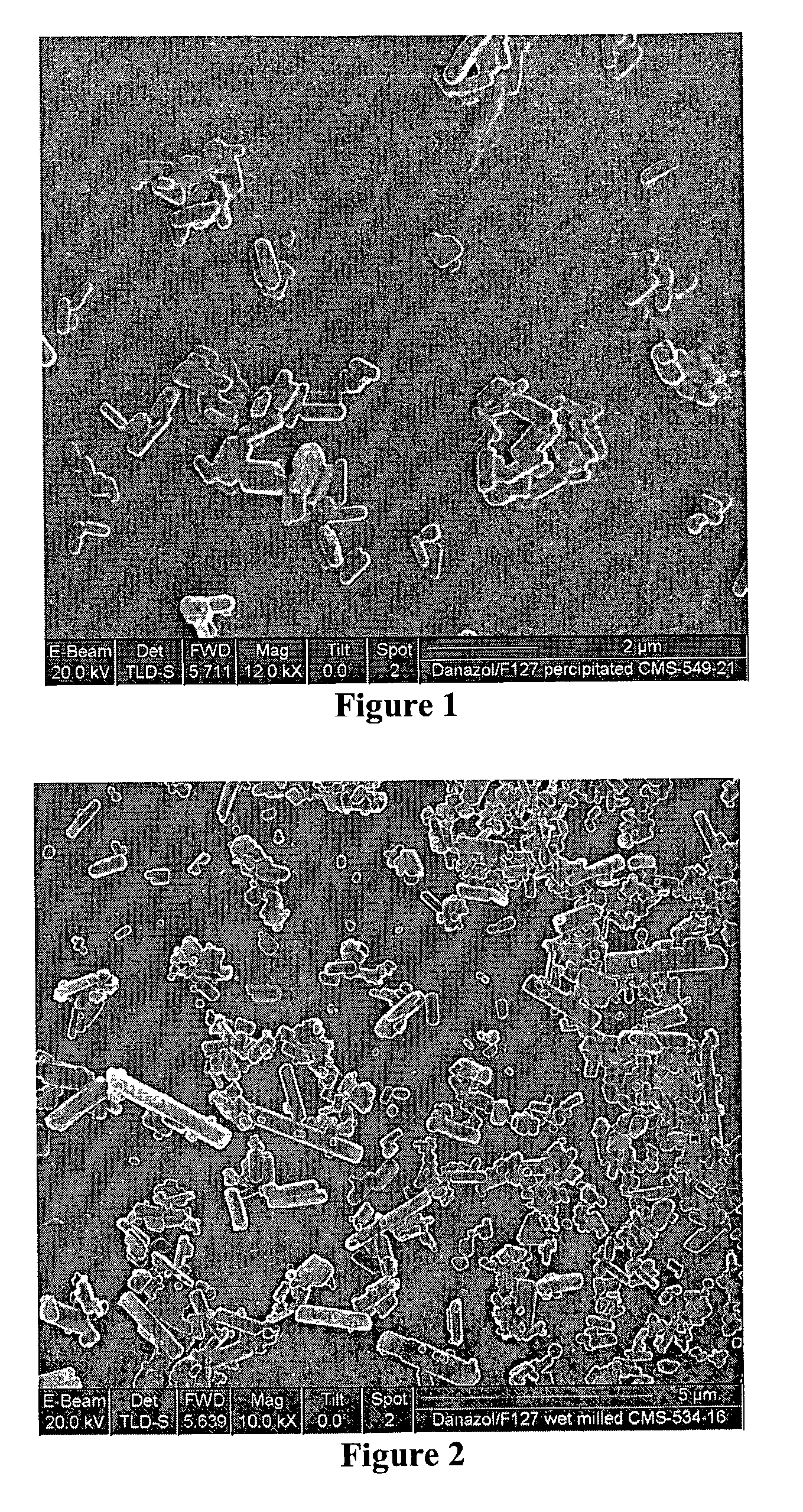Crystalline drug particles prepared using a controlled precipitation process
a technology of controlled precipitation and crystallization, which is applied in the direction of drug compositions, sexual disorders, and treatment, etc., can solve the problems of large salt concentration, poor bioavailability, noise and dust,
- Summary
- Abstract
- Description
- Claims
- Application Information
AI Technical Summary
Problems solved by technology
Method used
Image
Examples
example 3
Particles of Naproxen Prepared Using a Controlled Precipitation Process
[0035] 29.95 g of 6.69 wt % Naproxen in methanol was injected into 150.4 g of a 2 wt % solution of PVP in water at 2 degrees C. with vigorous stirring. The solvent was stripped from the resulting slurry and then freeze dried to yield a powder. Particle size and time to complete dissolution were measured as in Examples 1 and 2. Results are shown in Table A below.
1TABLE A Time to complete Mean particle dissolution Ex. Drug substance Stabilizer size (microns) (seconds) 1 Danazol Pluronic F127 0.54 111 2 Danazol Pluronic F127 0.29 78 3 Naproxen PVP 0.24 31
examples 4 through 6
[0036] The following wet milling procedure was used to prepare the samples of Examples 4 through 6. Table B lists that materials used and the results. The stabilizer indicated in Table B was dissolved in water and placed in a wide mouth jar. To this was added the drug indicated in Table B below and a quantity of 1 mm ZrO milling beads, as indicated in Table B. The jar was then placed on a rotating ball mill and milled for the length of time indicated in Table B. The Jar was removed, the milling beads filtered off and the resulting slurry spray dried to a powder, which was then redispersed in water to 2% solids (followed by vortex agitation for ten seconds) and analyzed on a Coulter LS 230 particle size analyzer. The resulting particle sizes are shown in Table B. Scanning Electron Microscopy (SEM) results for Example 4 are shown in FIG. 2, which confirms that the particles are essentially crystalline but also shows that some particles larger than 2 microns are present.
[0037] The time...
PUM
| Property | Measurement | Unit |
|---|---|---|
| mean particle size | aaaaa | aaaaa |
| equilibrium solubility | aaaaa | aaaaa |
| mean particle size | aaaaa | aaaaa |
Abstract
Description
Claims
Application Information
 Login to View More
Login to View More - R&D
- Intellectual Property
- Life Sciences
- Materials
- Tech Scout
- Unparalleled Data Quality
- Higher Quality Content
- 60% Fewer Hallucinations
Browse by: Latest US Patents, China's latest patents, Technical Efficacy Thesaurus, Application Domain, Technology Topic, Popular Technical Reports.
© 2025 PatSnap. All rights reserved.Legal|Privacy policy|Modern Slavery Act Transparency Statement|Sitemap|About US| Contact US: help@patsnap.com


